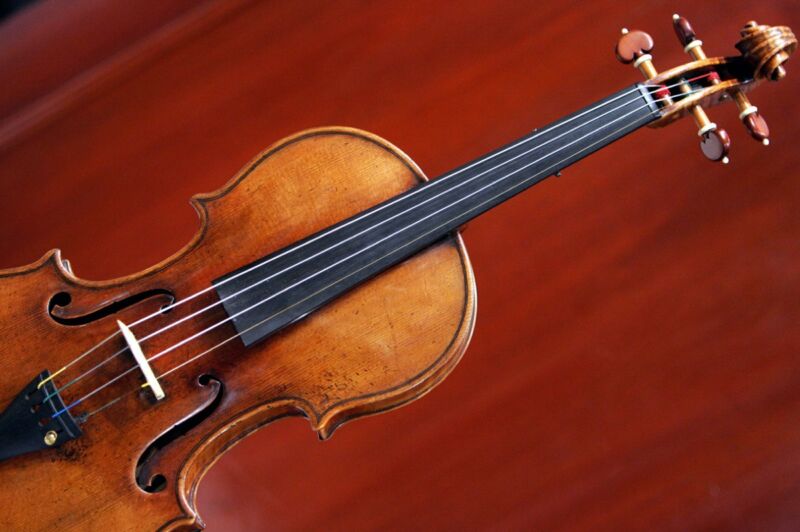Fresh chemical clues emerge for the unique sound of Stradivari violins

Enlarge / A 1729 Stradivari known as the "Solomon, Ex-Lambert" on display at Christie's in New York in March 2007. (credit: Don Emmert/AFP/Getty Images)
Musicians and music aficionados alike have long savored the rich sound quality of the violins created by Antonio Stradivari, particularly at the dawn of the 18th century (the so-called "golden period"). Scientists have been equally fascinated by why Stradivari violins seem to sound so much better than modern instruments; it has been an active area of research for decades.
A recent paper published in the journal Analytical Chemistry reported that nanoscale imaging of two such instruments revealed a protein-based layer at the interface of the wood and the varnish, which may influence the wood's natural resonance, and hence the resulting sound. Meanwhile, another paper published in the Journal of the Acoustical Society of America showed that the better resonance of older violins produces stronger combination tones, which can also affect the perception of musical tones.
I've written extensively about this topic in the past, and you can read a handy summary of some of the research in this area to date here. Per my 2021 article, the (perceived) unique sound can't just be due to the instrument's geometry, although Stradivari's geometrical approach gave us the violin's signature shape. One hypothesis is that Stradivari may have used Alpine spruce that grew during a period of uncommonly cold weather, which caused the annual growth rings to be closer together, making the wood abnormally dense. Another popular theory has to do with the varnish: namely, that Stradivari used an ingenious cocktail of honey, egg whites, and gum arabic from sub-Saharan trees-or perhaps salts or other chemicals.